Chemical Reactions with Seashells
One of our favorite family vacation destinations is the beach. I love it! The sand, the waves, and the sun are all glorious. I just can’t get enough!
When we do take a trip to the beach, we usually spend as much time in the sand and water as possible. We dig in the sand, snorkel in the shallow water when the waves are calm, jump the waves when they are high, and nap under our beach canopy when needed.
One of our favorite things to do as a family on the beach is collect shells. We find them on early morning walks on the beach and as they wash up throughout the day. By the end of our vacation, we usually have a sand bucket full of them.
When we get home, we sort them according to their types. Sometimes we use a shell guide to try and identify them. We might also put them in jars to admire them and remember our trip. And, sometimes we use them for a chemistry experiment!
What Is A Seashell?
Who isn’t mesmerized by shells being washed up on shore by the crashing waves? Their shapes and colors make them like treasures pulled from the deep mystery of the ocean. Collecting shells on the beach can be addicting. You never know what the next one might look like.
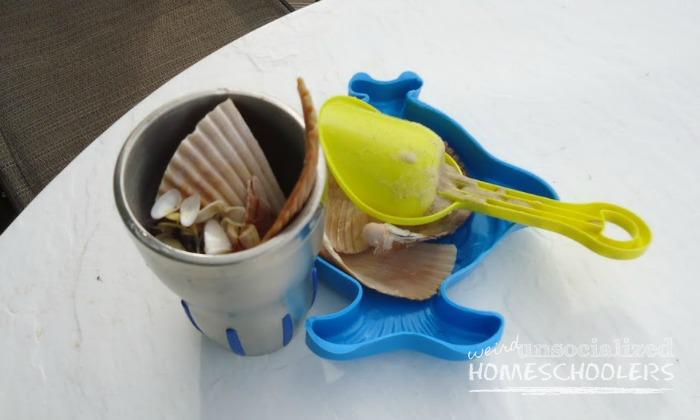
But what are seashells?
Seashells are exoskeletons formed by soft-bodied mollusks such as oysters and clams for protection from the environment and predators. These mollusks secrete a material made mostly of calcium carbonate which builds up and hardens to create the shell. As the animal grows, this exoskeleton expands, as well.
Some people think of the shell as the home of the mollusk. This idea is accurate to an extent. The animal does live in its shell. However, the shell is attached to the animal’s body, so the creature can’t leave its “home” unless it dies. These discarded exoskeletons are the empty shells we find on the beach.
Seashells And Chemistry
When we want to know the chemical composition of something, we test it. Doing various simple chemistry experiments and tests can positively identify some substances and rule out others. An easy test for the presence of calcium carbonate uses vinegar.
Place a shell in a glass and add enough vinegar to cover the shell. Observe.
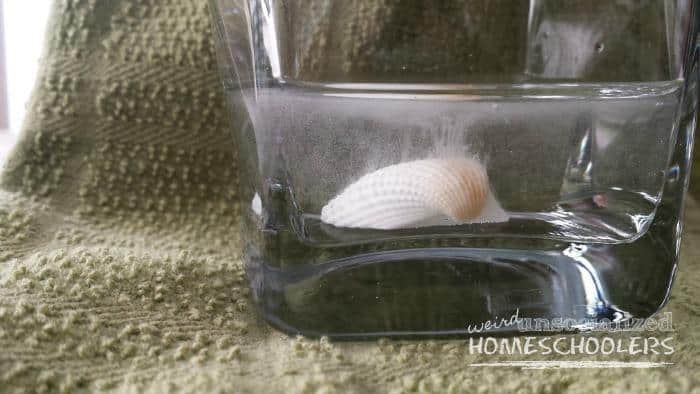
See the bubbles accumulating on the surface of the shell. These are carbon dioxide bubbles created by the chemical reaction between calcium carbonate, a base, and acetic acid in the vinegar, an acid. The shell is breaking down in this process. If you leave the shell in the vinegar for a few days, the vinegar will visibly break down the shell. The remains of the shell would be thin and brittle.
Geologists use this type of test to determine the presence of limestone in rock. Limestone contains calcium and will react with an acid in the same way.
Try this easy experiment at home to see how the calcium in seashells reacts with acid or test rocks with acid to determine if they contain limestone.
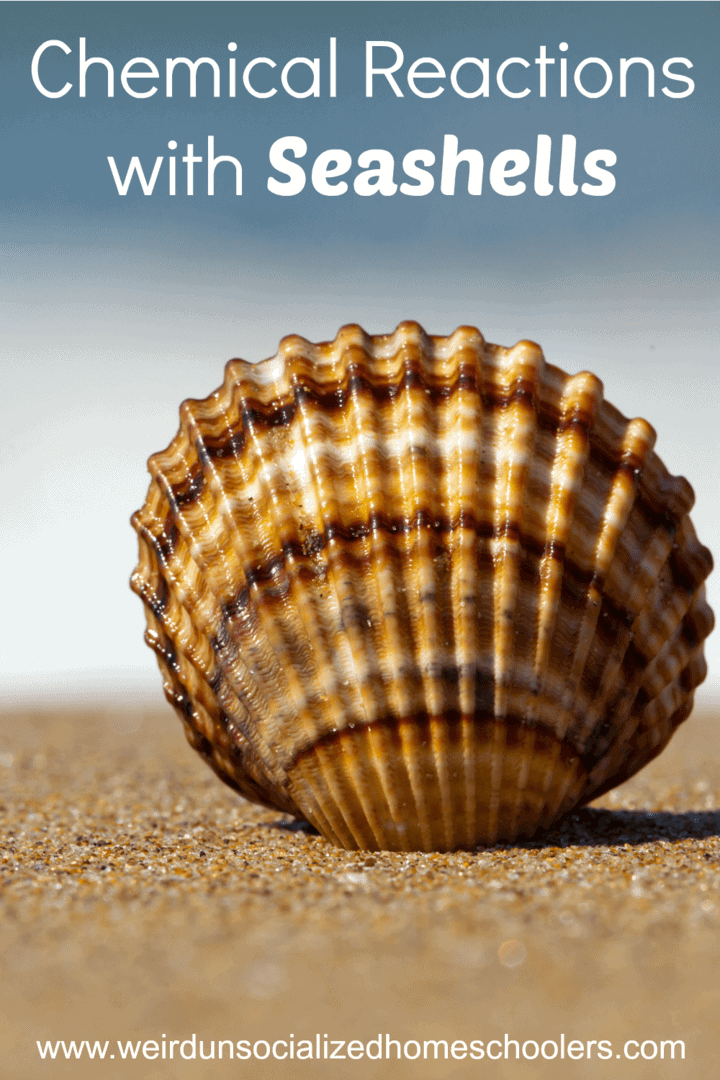

This article was written by a Weird, Unsocialized Homeschoolers guest author. See the author's full bio in the body of the post.



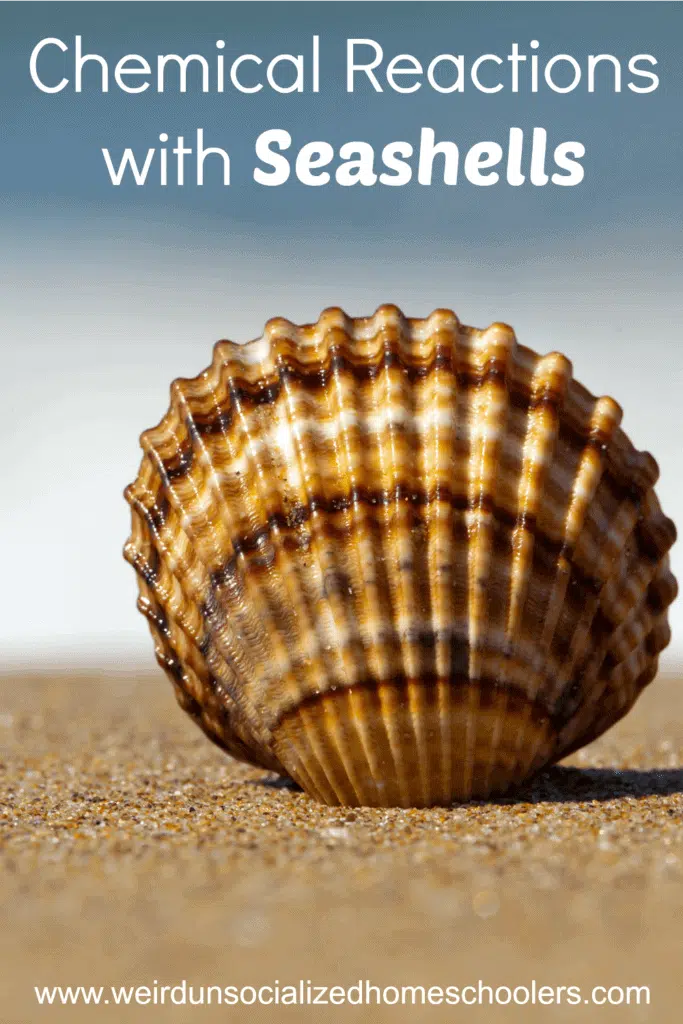
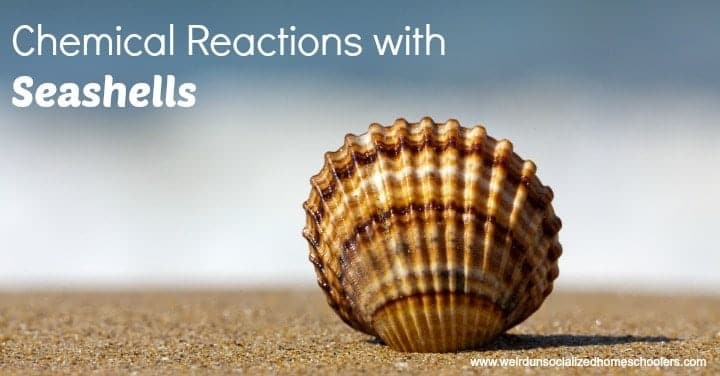
This is awesome! My daughter has a bucketful of shells from when she went to Atlantic City with my brother in the basement. I love that we have something to actually DO with them now. And I had no idea that the shells were attached to their bodies. I knew snail shells were, but I didn’t make the connection.
Have fun with this! Try it with different colored shells. You can see the color disappearing. So cool.
How cool! Pinned to try after our next trip to the beach!
Yes! You can take some vinegar and try this on your trip. It’s so easy.
We probably won’t visit the beach anytime soon, but I’m thinking I could pick up a bag of shells at the craft store and experiment with them! This looks so fun!